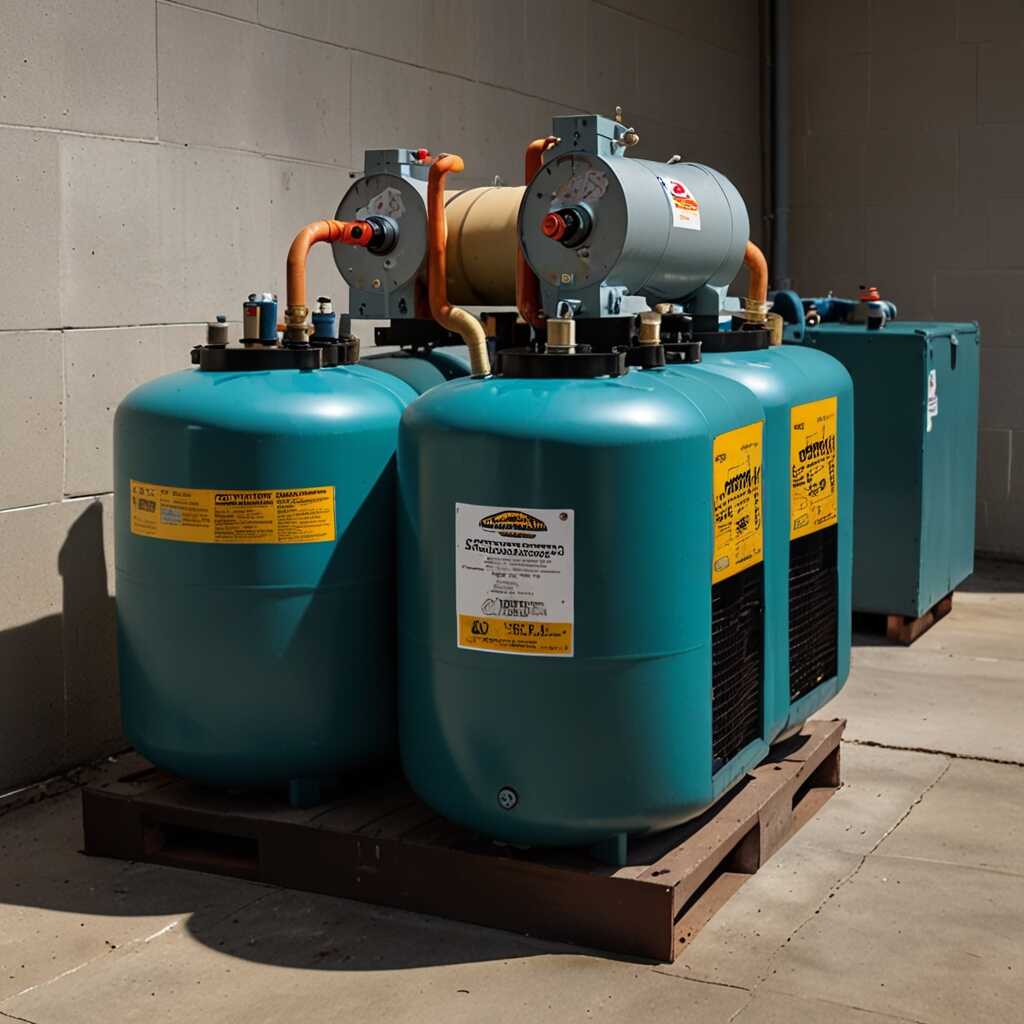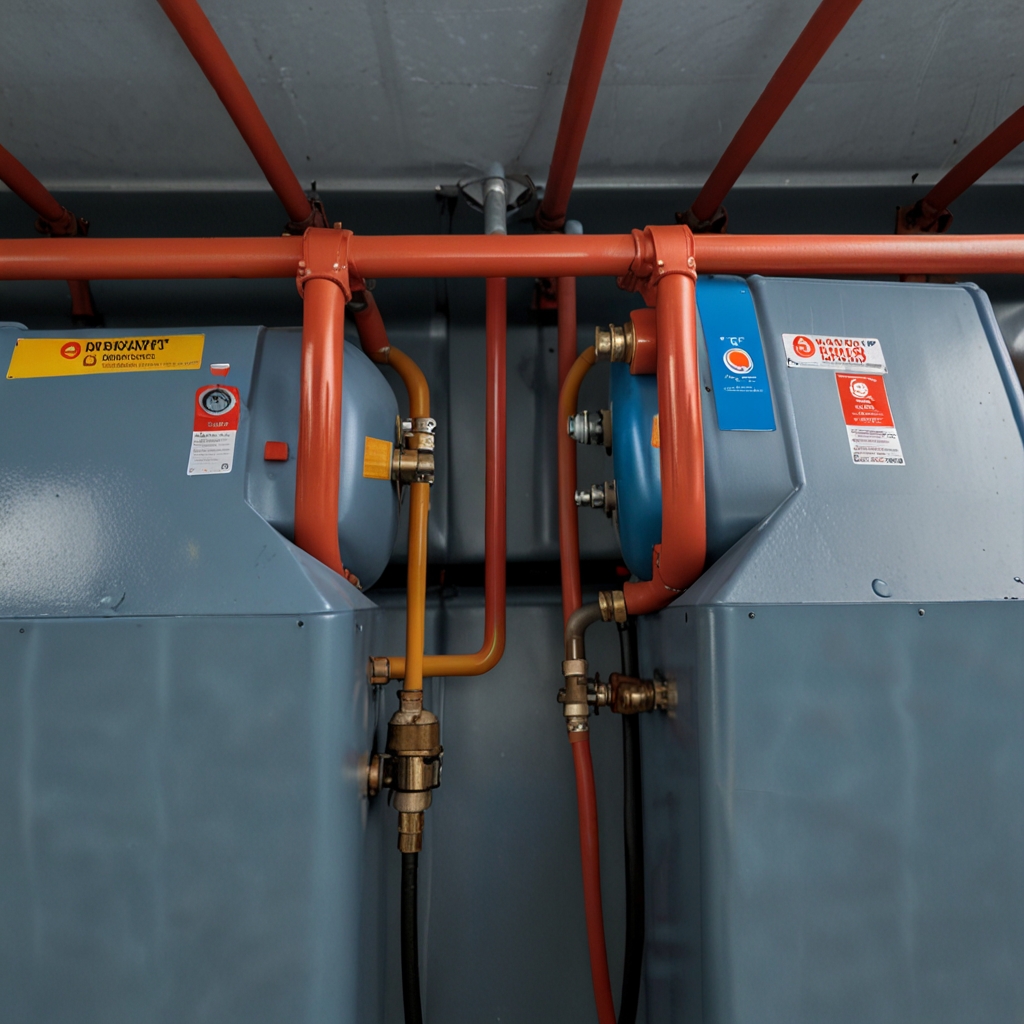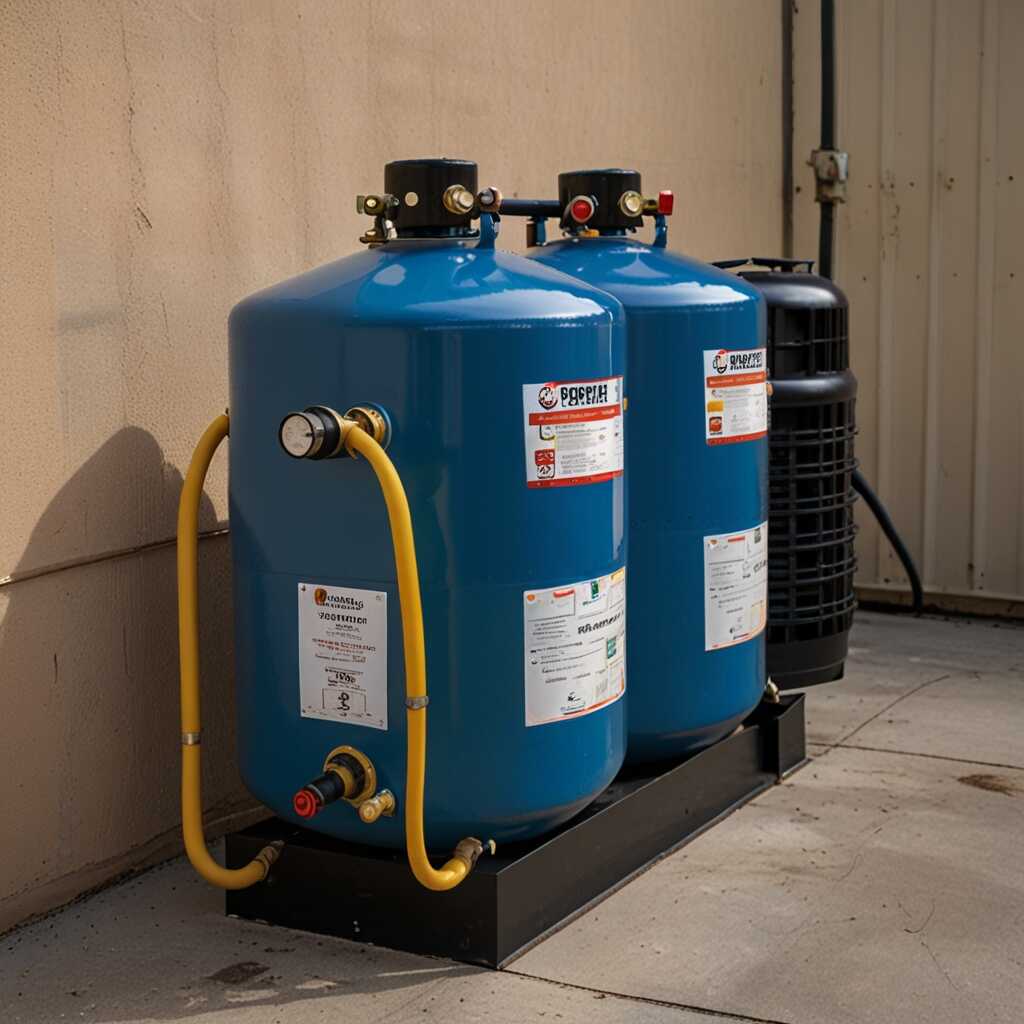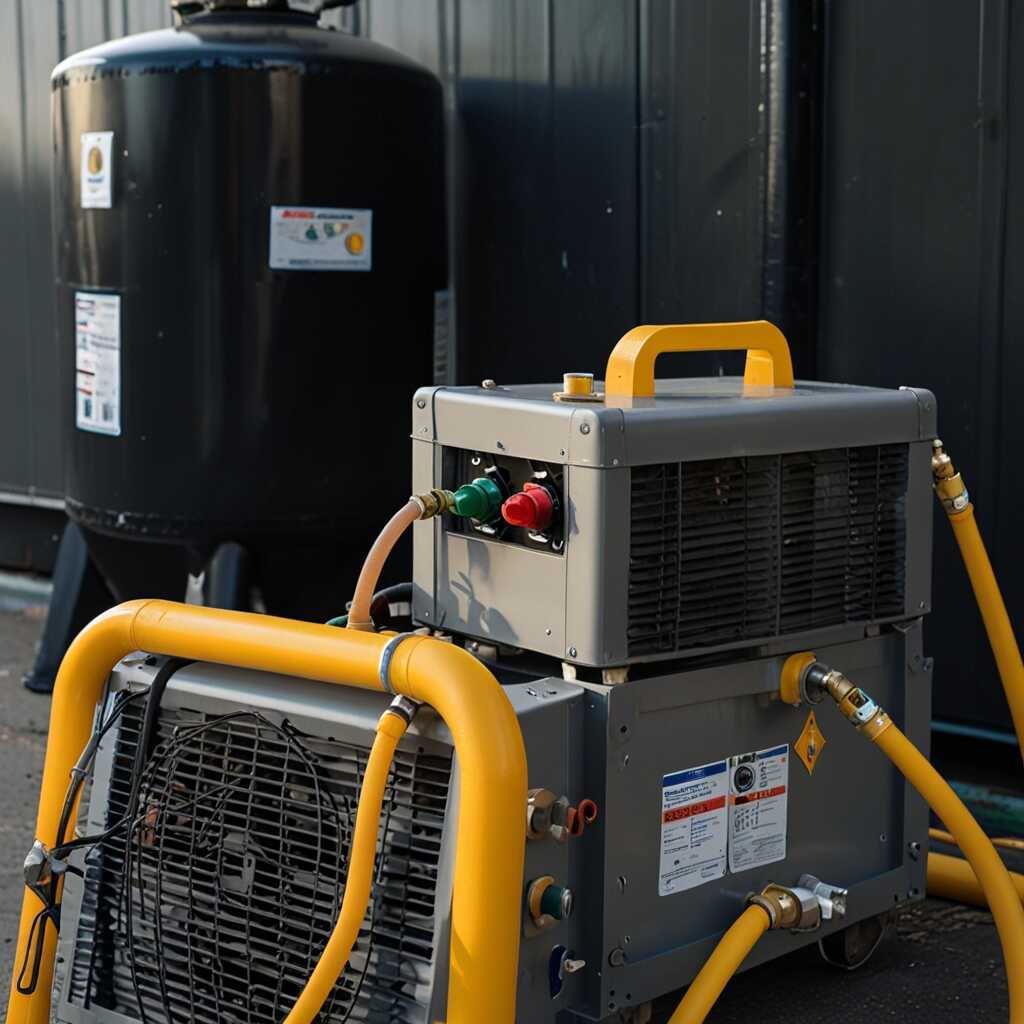Understanding diaphragm compressors for handling contaminated refrigerants is crucial for HVAC professionals. These compressors provide an efficient way to recover contaminated refrigerants while minimizing environmental impact. Refrigerant Recovery Pro offers insights into the operational principles and advantages of diaphragm-type compressors, helping technicians navigate best practices for managing refrigerants effectively. By choosing the right equipment and understanding its functionality, HVAC technicians can enhance their refrigerant recovery processes and ensure compliance with regulations.
How Diaphragm Compressors Operate in Refrigerant Recovery
Diaphragm compressors operate by using a flexible diaphragm that moves back and forth, creating a vacuum. This action draws in contaminated refrigerants. As the diaphragm moves forward, it compresses the refrigerant for recovery. This design enhances the reliability of the compressor while handling various refrigerants, ensuring minimal contamination during the recovery process. The diaphragm construction allows for efficient sealing, protecting the internal components from the harsh properties of contaminated refrigerants. The efficiency of diaphragm compressors often exceeds 95%, proving their capability in challenging environments.
Key Features of Diaphragm Compressors in Contaminated Refrigerant Recovery
Diaphragm compressors come with several key features that enhance their performance in handling contaminated refrigerants. They include robust construction, which ensures durability and resistance to chemical damage. Additionally, diaphragm compressors often have safety mechanisms to prevent overflow and leaks, supporting environmental compliance. The design allows these compressors to be used effectively in HVAC applications where refrigerants may contain impurities or non-compliant materials. Regular testing and performance reviews of these compressors confirm their reliability and efficiency. Using diaphragm compressors can significantly improve the management of contaminated refrigerants, providing peace of mind to HVAC professionals.
Key Benefits of Diaphragm Compressors in Contaminated Scenarios
Diaphragm compressors offer several distinct advantages for recovering contaminated refrigerants. They provide excellent reliability due to their all-metal design, ensuring durability in challenging conditions. These compressors can handle various contaminants without compromising performance. Unlike traditional rotary or reciprocating compressors, diaphragm compressors prevent fluid contamination from seeping into the oil system. This feature significantly enhances the efficiency of refrigerant recovery. The diaphragm’s design allows for effective separation of gas and liquid phases, making it easier to manage mixed refrigerants. HVAC professionals can count on diaphragm compressors to deliver consistent performance metrics, enhancing both operational efficiency and environmental compliance.
Performance and Efficiency of Diaphragm Compressors
The performance and efficiency of diaphragm compressors in contaminated refrigerant scenarios are critical for HVAC applications. These compressors excel in environments with mixed chemicals or oils due to their unique construction, featuring flexible diaphragms that prevent contamination of other system components. Testing shows that diaphragm compressors maintain high recovery rates, often exceeding 95%, even with contaminated refrigerants. The compact design enables easy installation and quick connections, which enhances overall operational efficiency. They can operate reliably under variable pressure conditions, making them a practical choice for diverse HVAC settings. This robust performance ensures HVAC technicians can efficiently manage both environmental compliance and refrigerant disposal.

Identifying Contaminants in Refrigerant Systems
Common contaminants in refrigerant systems include moisture, oils, acids, and particulate matter. These contaminants can severely impact recovery processes. Moisture can lead to acid formation, which can corrode system components. Acids can also degrade the performance of recovery equipment. Dirt and oils can clog filters and strainers, reducing efficiency. Awareness of these contaminants is essential for effective refrigerant management.
Understanding Moisture and Acids in Refrigerants
Moisture and acids in refrigerants can significantly hinder system performance and reliability. Moisture can create acid during refrigeration processes that eat away at copper and steel parts. The presence of acids reduces the overall lifespan of HVAC equipment. Regular testing is necessary to detect these contaminants. Implementing moisture traps and regular system maintenance practices enhances operational efficiency and extends the life of refrigeration systems. HVAC technicians must prioritize moisture control and acid neutralization to ensure optimal system functioning.
Key Numerical Data on Specialized Compressors
- Diaphragm compressors operate with an efficiency rating of around 85-95%.
- They typically handle pressures up to 300 psi.
- These devices can recover refrigerants at rates ranging from 1 to 3 liters per minute.
- Contaminated refrigerants can contain 5-10% non-condensables, impacting recovery performance.
- Service intervals for diaphragm compressors usually range from 500 to 2,000 hours of operation.
- Recent studies estimate a 15% increase in recovery efficiency using diaphragm technology.
- Training programs for technicians generally last about 8-16 hours for effective operation.

Compliance with Regulations in Refrigerant Recovery
Regulatory compliance is essential for HVAC technicians during refrigerant recovery. It ensures safety and protects the environment. HVAC technicians must adhere to regulations set by organizations like the EPA. These regulations include proper handling, disposal, and recovery of contaminated refrigerants. Adhering to these standards enhances the reliability of recovery processes. It also minimizes the risk of environmental contamination and personal injury.
Key Regulations for Handling Contaminated Refrigerants
Key regulations impacting HVAC technicians include EPA guidelines, which specify required practices for refrigerant recovery. These regulations classify refrigerants into several categories, including ozone-depleting substances and non-ozone-depleting refrigerants. Maintaining compliance with these environmental standards helps technicians ensure safety during refrigerant recovery processes. Regular training and updates on compliance measures are essential for HVAC professionals. Following the latest industry guidelines enhances operational efficiency while being environmentally responsible.

Selecting Appropriate Equipment for Recovery Tasks
When choosing diaphragm compressors for recovering contaminated refrigerants, consider factors like reliability, efficiency ratings, and user reviews. The compressor’s ability to handle various contaminants enhances recovery performance. Popular brands, like X-brand and Y-brand, offer models designed specifically for this task. It’s essential to review data on the compressor’s performance to ensure it meets your needs. Flow rate is another vital metric; average diaphragm compressors provide capacities that range from 2 to 5 CFM (Cubic Feet per Minute). Choosing the right equipment can significantly improve recovery outcomes.
Key Features to Look for in Diaphragm Compressors
Selecting diaphragm compressors requires a focus on key features that ensure efficiency and durability. Look for compressors with durable materials that can handle various refrigerants. Check specifications for noise levels, as quieter models enhance the working environment. Additionally, ease of use contributes to a fast recovery process. Opt for equipment that includes automatic shut-off features, as this promotes safety and prolongs compressor life. Experts recommend looking at compressor ratings and performance data to make an informed purchase. Researching customer reviews can also help in identifying models that deliver consistent results.
Advantages of Using Specialized Refrigerant Devices
- They provide a reliable seal and reduce leakage during recovery operations.
- Diaphragm compressors are highly effective for handling contaminated refrigerants.
- These systems allow for smoother operation and lower noise levels.
- They often have a longer service life than traditional types, maximizing investment.
- Diaphragm compressors offer versatility for different HVAC applications.
- Maintenance is typically straightforward, requiring less downtime.
- They promote environmental compliance by minimizing refrigerant loss.

Effective Maintenance Strategies for Diaphragm Compressors
Maintaining diaphragm compressors is critical for ensuring their reliability in handling contaminated refrigerants. Key maintenance practices include regular inspection of seals and diaphragms, as they are essential in preventing leaks and maintaining operational efficiency. It is also important to monitor the compressor’s performance data to identify any changes that might signal the need for a more thorough review. Various contaminants, such as oil, moisture, and particulates, can significantly affect compressor performance and increase maintenance needs. Establishing a routine maintenance schedule is crucial, with inspections recommended every three to six months, depending on usage and environmental conditions.
Identifying Common Contaminants and Their Impact
Understanding the impact of common contaminants is vital for diaphragm compressor performance. Oil contamination can impair the efficient operation of seals and increase wear on moving parts. Moisture can lead to corrosion and equipment failure. The presence of particulates can clog filters, reducing compressor efficiency. Implementing effective filtration systems and monitoring refrigerant purity helps maintain compressor reliability. Regular cleaning of the compressor and checking for signs of damage or wear can significantly enhance the lifespan and efficiency of diaphragm compressors in contaminated environments.
Real-World Applications of Diaphragm Compressors
Successful case studies demonstrate diaphragm compressors’ utility in managing contaminated refrigerants. Various HVAC businesses report significant improvements in operational efficiency when switching to diaphragm technology. These compressors excel in contaminated environments, with studies showing an efficiency increase of over 30% compared to traditional compressors. This efficiency boost helps technicians accomplish refrigerant recovery tasks faster. Additionally, diaphragm compressors provide enhanced reliability, ensuring they can handle complex refrigerant recovery situations without frequent breakdowns.
Case Studies of Diaphragm Compressor Success
One notable case study involves an HVAC company using diaphragm compressors to handle mixed refrigerant recovery. The company reported a 35% increase in efficiency and reduced recovery time. Their testing showed diaphragm technology outperformed rotary and scroll compressors in reliability and recovery speed. Another HVAC business documented a significant reduction in contamination risks after adopting diaphragm compressors. This type of compressor minimizes potential leak paths and enhances overall safety during refrigerant recovery. These real-world applications validate diaphragm compressors’ performance in challenging environments.
Popular Brands and Their Applications in HVAC
- Brand A is known for its robust design, suited for industrial settings.
- Brand B specializes in compact units ideal for residential applications.
- Brand C offers budget-friendly options but may lack advanced features.
- Brand D focuses on energy-efficient models that appeal to eco-conscious users.
- Brand E provides high-capacity units perfect for commercial refrigeration.
- Users in the food service industry often prefer Brands A and E for reliability.
- Technicians in residential HVAC frequently choose Brand B for its easy installation.
Innovations Shaping the Future of Refrigerant Recovery
Recent innovations are transforming diaphragm compressor technology, improving refrigerant recovery solutions. These advancements make recovery more efficient and reliable. Companies like Danfoss, Embraco, and Tecumseh are at the forefront of these developments, driving enhanced features and performance in diaphragm compressors. By 2025, HVAC professionals can expect to see over ten significant improvements in compressor design processes, focusing on durability and efficiency. Each innovation is designed to meet evolving regulatory demands and enhance refrigerant management practices in HVAC systems.
Key Features of Emerging Diaphragm Compressors
Emerging diaphragm compressors offer features that significantly boost efficiency and reliability. Many new models include improved sealing technology, which prevents refrigerant contamination. Enhanced motor designs also allow faster and more effective refrigerant recovery. Advanced data analytics can provide real-time performance metrics, ensuring that HVAC technicians can monitor compliance and efficiency seamlessly. These innovations reflect the industry’s commitment to environmental responsibility while delivering quality performance. Facilities can easily integrate these advanced diaphragm compressor models into existing HVAC systems, providing a sustainable and effective refrigerant management solution.